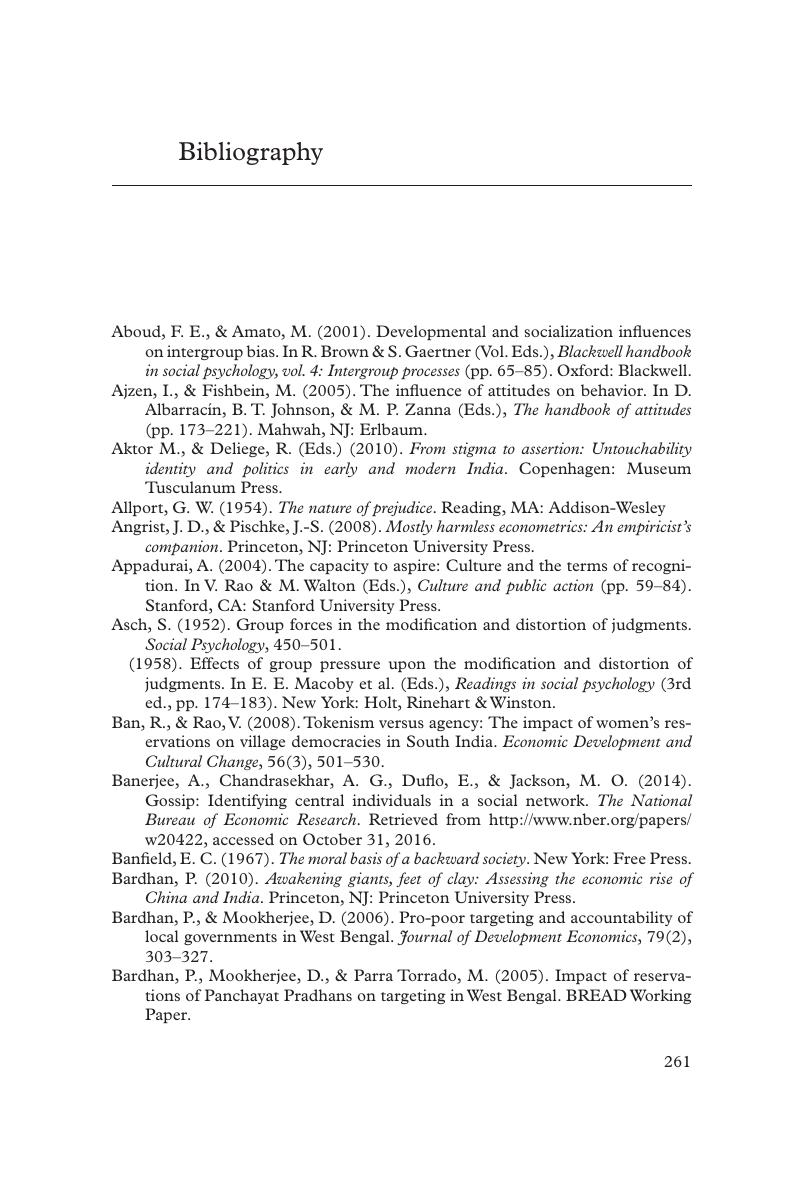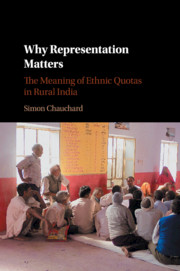Book contents
- Why Representation Matters
- Why Representation Matters
- Copyright page
- Contents
- Figures
- Tables
- Acknowledgments
- Note on Terminology
- 1 Political Representation and Intergroup Relations
- 2 Untouchability in Rural India
- 3 Local Representation in Rural India
- 4 Theory: The Impact of Descriptive Representation
- 5 Quantitative Methodology
- 6 Tests: The Material and Tangible Effects of Descriptive Representation
- 7 Tests: The Cognitive Impact of Descriptive Representation
- 8 The Effects of Descriptive Representation on Interpersonal Relations
- 9 Descriptive Representation and Intergroup Relations in Comparative Perspective
- Appendix A Methodological Note on Field Research
- Appendix B The Pair-Matches
- Appendix C Additional Balance Tests
- Appendix D Did Members of the Scheduled Castes Self-Select into Reserved Villages?
- Bibliography
- Press Articles
- Index
- References
Bibliography
Published online by Cambridge University Press: 25 March 2017
- Why Representation Matters
- Why Representation Matters
- Copyright page
- Contents
- Figures
- Tables
- Acknowledgments
- Note on Terminology
- 1 Political Representation and Intergroup Relations
- 2 Untouchability in Rural India
- 3 Local Representation in Rural India
- 4 Theory: The Impact of Descriptive Representation
- 5 Quantitative Methodology
- 6 Tests: The Material and Tangible Effects of Descriptive Representation
- 7 Tests: The Cognitive Impact of Descriptive Representation
- 8 The Effects of Descriptive Representation on Interpersonal Relations
- 9 Descriptive Representation and Intergroup Relations in Comparative Perspective
- Appendix A Methodological Note on Field Research
- Appendix B The Pair-Matches
- Appendix C Additional Balance Tests
- Appendix D Did Members of the Scheduled Castes Self-Select into Reserved Villages?
- Bibliography
- Press Articles
- Index
- References
Summary

- Type
- Chapter
- Information
- Why Representation MattersThe Meaning of Ethnic Quotas in Rural India, pp. 261 - 280Publisher: Cambridge University PressPrint publication year: 2017



